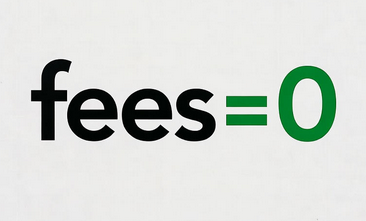An Approach to Substantiating the Composition of the Reconnaissance-Firing Systems
DOI:
https://doi.org/10.3849/aimt.01816Keywords:
active redundancy, operational stability, passive redundancy, reconnaissance-firing systems, sliding redundancy, triple modular redundancyAbstract
An approach to justifying the composition of the reconnaissance-firing systems is proposed, which would consider the appropriate type of redundancy for each subsystem. Reconnaissance subsystems have a triple modular redundancy because this type of redundancy has a high degree of reliability of the received signal and a high probability of faultless work at the initial stage of operation. For the control subsystem, the most appropriate type of redundancy is passive redundancy, because this subsystem, as a rule, has the lowest failure rate among the elements of other subsystems. For the fire support subsystem, the most appropriate type of redundancy is sliding redundancy, because this type of redundancy allows you to ensure the redundancy of a larger number of main elements with a smaller number of spare ones. The application of the mentioned types of redundancy for these subsystems increases the probability of faultless work and saves the resource of redundancy elements.
References
SEMENENKO, O., I. MARKO, S. BARANOV, A. REMEZ, T. CHEREVATY and A. MALINOVSKYI Analysis of the Influence of Military and Economic Factors on the Justification of the Choice of a Rational Version of the Composition of the Intelligence-strike System in the Operation. Journal of Scientific Papers «Social Development and Security», 2022, 12(6), pp. 31-48. https://doi.org/10.33445/sds.2022.12.6.4.
MAISTRENKO, O., Y. RYZHOV, D. KHAUSTOV, S. TSYBULIA and Y. NASTISHIN. Decision-Making Model for Task Execution by a Military Unit in Terms of Queuing Theory [online]. Military Operations Research, 2021, 26(1), pp. 59-70 [viewed 2023-03-25]. Available from: https://www.jstor.org/stable/26995958
PRYMIRENKO, V., R. SHEVTSOV and P. OPEN’KO. Long-Range Assets Effectivity Dependence on the Method of Their Employment. Advances in Military Technology, 2022, 17(2), pp. 281-291. https://doi.org/10.3849/aimt.01559.
MIRNENKO, V., P. YABLONSKY, V. TYURIN, A. SALII, O. AVRAMENKO and M. KASIANENKO Determination of Efficiency of Weapon Systems Maintenance as Condition for DM Distribution. Advances in Military Technology, 2022, 17(2), pp. 325-339. https://doi.org/10.3849/aimt.01463.
MAISTRENKO, O., V. KHOMA, O. LYKHOLOT, A. SHCHERBA, O. YAKUBOVSKYI, S. STETSIV, A. KORNIENKO and A. SAVELIEV. Devising a Procedure for Justifying the Need for Samples of Weapons and Weapon Target Assignment When Using a Reconnaissance Firing System. Eastern-European Journal of Enterprise Technologies, 2021, 5(3), pp. 65-74. https://doi.org/10.15587/1729-4061.2021.241616.
CHUN-QING, L. and Y. WEI. Time-Dependent Reliability Theory and Its Applications. Cambridge: Woodhead Publishing, 2023. ISBN 978-0-323-85882-3.
EFIMENKO, S., A. SMETANKIN, A. LIASHENKO, M. ARUTIUNIAN, I. CHERNORUTSKY and S. KOLESNICHENKO. Method of Expansion of Mathematical Tools of the Reliability Theory Due to the Properties of Stochastic Theory of Similarity. In: ARSENIEV, D.G. and N. AOUF, eds. Cyber-Physical Systems and Control II. CPS&C 2021. Cham: Springer, 2023. ISBN 978-3-031-20874-4.
YEH, W.C., W. ZHU, S.Y. TAN, G.G. WANG and Y.H. YEH. Novel General Active Reliability Redundancy Allocation Problems and Algorithm. Reliability Engineering & System Safety, 2022, 218, pp. 108-167. https://doi.org/10.1016/j.ress.2021.108167.
MAISTRENKO, O., O. KARAVANOV, O. RIMAN, V. KURBAN, A. SHCHERBA, I. VOLKOV, T. KRAVETS and G. SEMIV. Devising a Procedure for Substantiating the Type and Volume of Redundant Structural-functional Elements of Reconnaissance-firing Systems. Eastern-European Journal of Enterprise Technologies, 2021, 2(3) (110), pp. 31-42. https://doi.org/10.15587/1729-4061.2021.229031.
VEERANNA, T. and K.K. REDDY. Sliding Window Assisted Mutual Redundancy-based Feature Selection for Intrusion Detection System. International Journal of Ad Hoc and Ubiquitous Computing, 2022, 40(1-3), pp. 176-186. https://doi.org/10.1504/IJAHUC.2022.123538.
ARIFEEN, T., A.S. HASSAN and A.L. JEONG. Fault Tolerant Voter for Approximate Triple Modular Redundancy. Electronics, 2019, 8(3), 332. https://doi.org/10.3390/electronics8030332.
MAISTRENKO, O., V. KHOMA, O. KARAVANOV, S. STETSIV and A. SHCHERBA. Devising a Procedure for Justifying the Choice of Reconnaissance-firing Systems. Eastern-European Journal of Enterprise Technologies, 2021, 1(3), pp. 60-71. https://doi.org/10.15587/1729-4061.2021.224324.
Downloads
Published
License
Copyright (c) 2024 Advances in Military Technology

This work is licensed under a Creative Commons Attribution-NonCommercial 4.0 International License.
Authors who publish with this journal agree to the following terms:
1. Authors retain copyright and grant the journal right of first publication with the work simultaneously licensed under a Creative Commons Attribution License that allows others to share the work with an acknowledgement of the work's authorship and initial publication in this journal.
2. Authors are able to enter into separate, additional contractual arrangements for the non-exclusive distribution of the journal's published version of the work (e.g., post it to an institutional repository or publish it in a book), with an acknowledgement of its initial publication in this journal.
3. Authors are permitted and encouraged to post their work online (e.g., in institutional repositories or on their website) prior to and during the submission process, as it can lead to productive exchanges, as well as earlier and greater citation of published work.
Users can use, reuse and build upon the material published in the journal for any purpose, even commercially.






